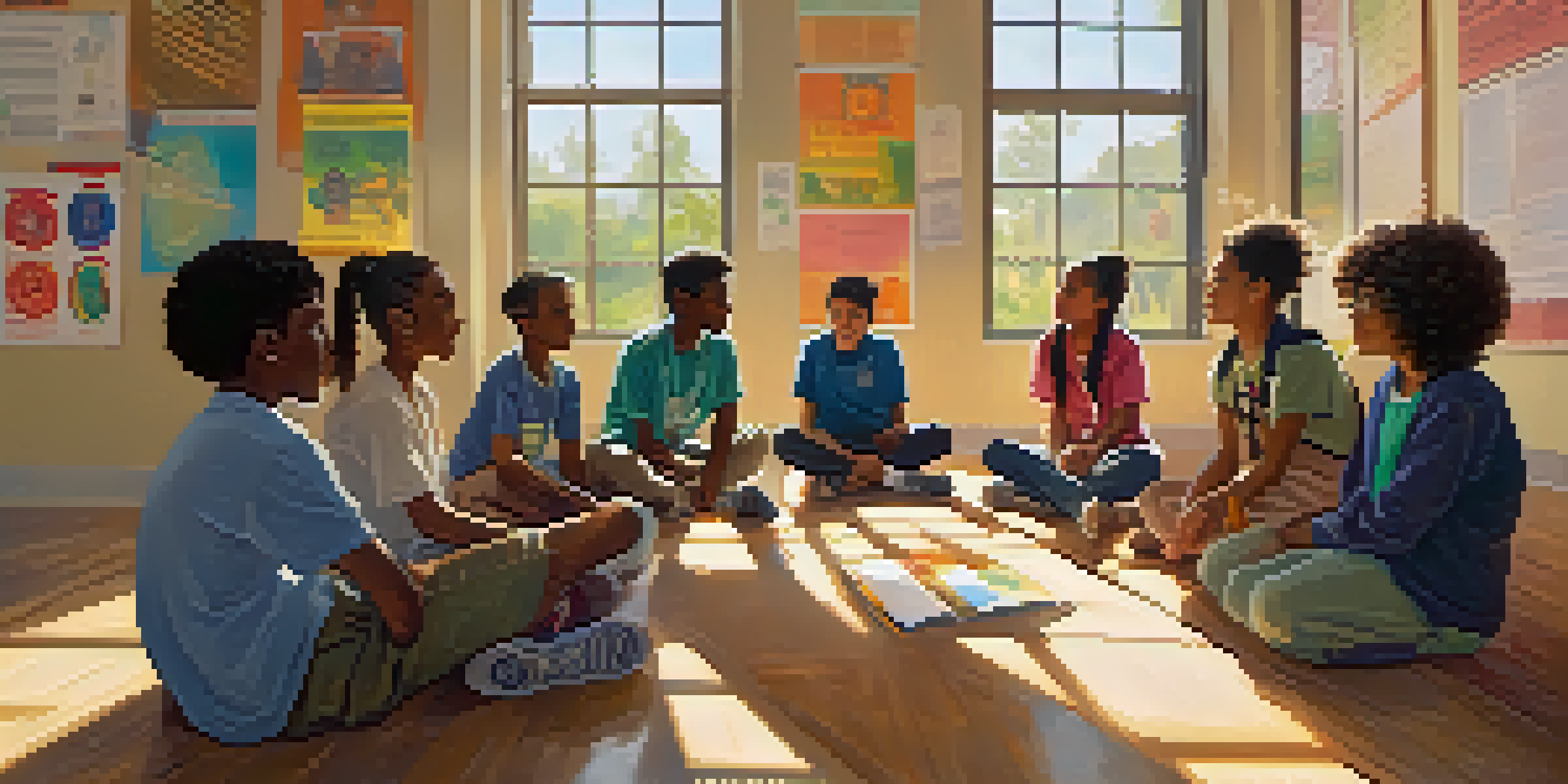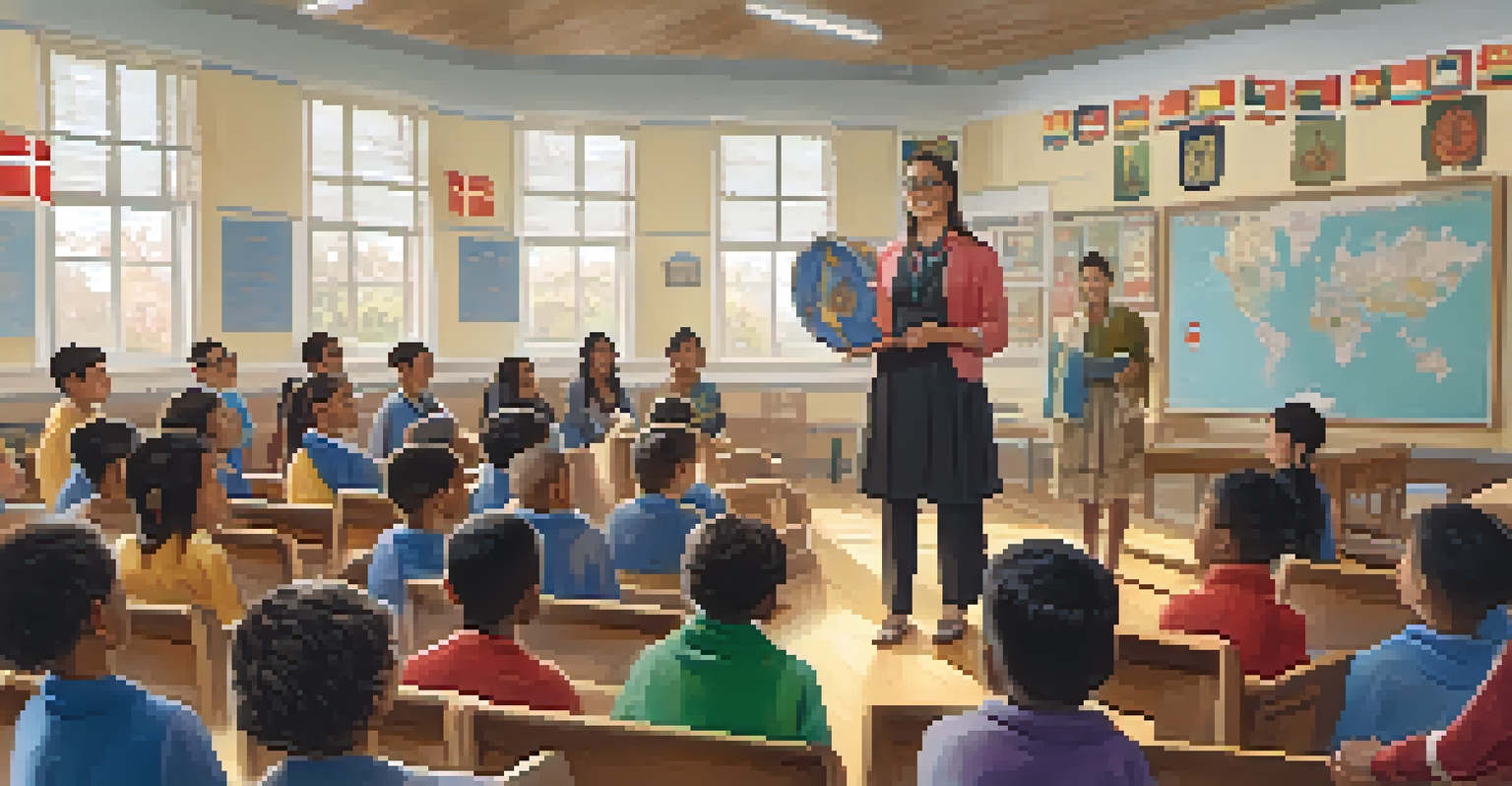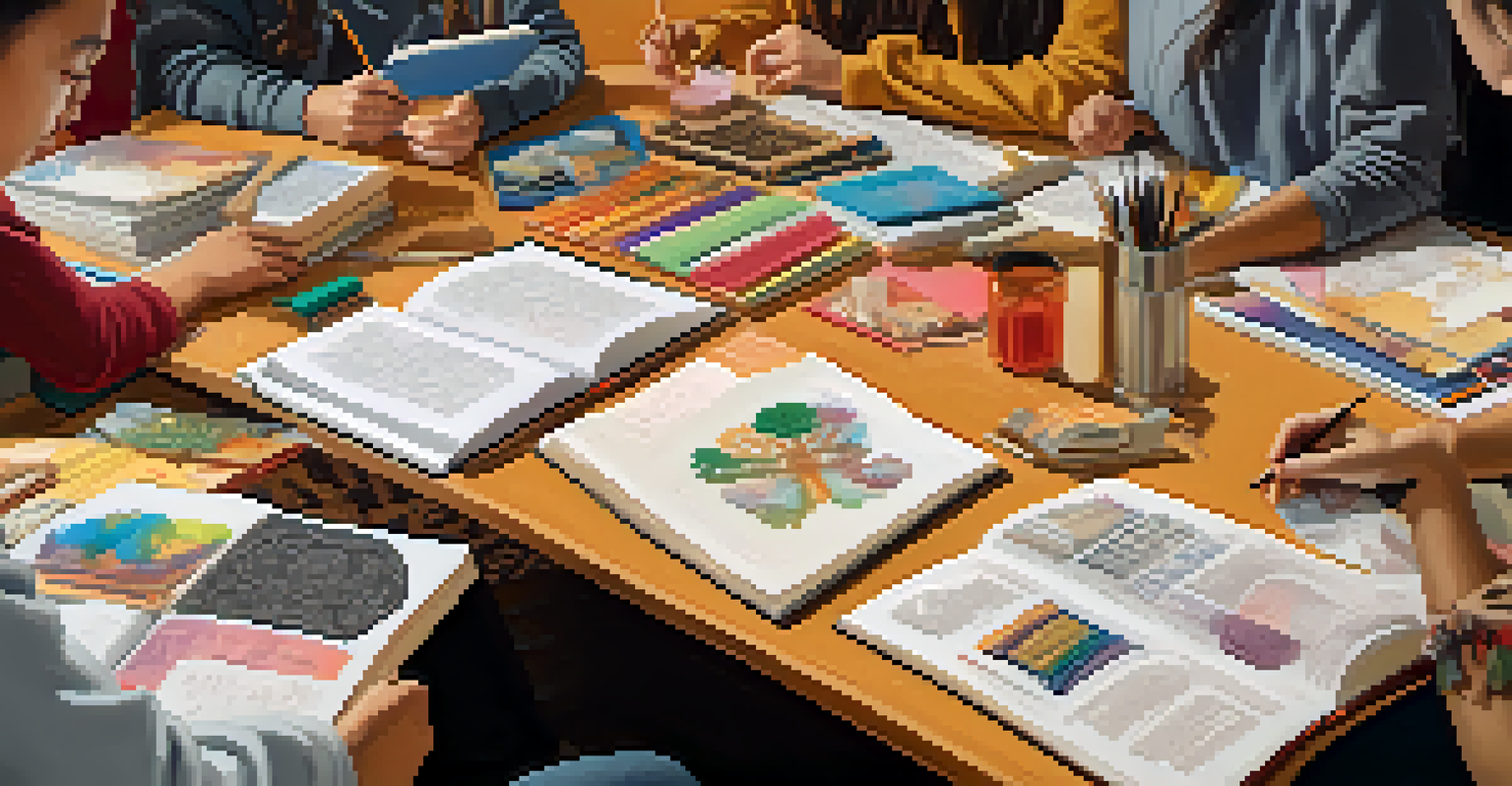Enhancing Classroom Dynamics Through Cultural Competence

Understanding Cultural Competence in Education
Cultural competence is the ability to understand, communicate, and effectively interact with people across cultures. In the classroom, this means recognizing the diverse backgrounds of students and valuing their unique perspectives. It's more than just awareness; it's about actively engaging with and adapting to these differences to enhance the learning experience.
We must not allow other people's limited perceptions to define us.
When educators embrace cultural competence, they create an inclusive environment that respects all voices and backgrounds. This not only fosters mutual respect but also encourages students to share their experiences and insights. A culture of understanding leads to deeper connections among students, enriching classroom discussions and collaborative projects.
For example, when a teacher incorporates multicultural literature into the curriculum, students from various backgrounds see themselves represented. This validation not only boosts their confidence but also encourages empathy among peers, as they learn about different cultures and experiences. In turn, this creates a more cohesive classroom environment.
The Benefits of Cultural Competence in Classroom Dynamics
Cultural competence can significantly enhance classroom dynamics by promoting inclusivity and reducing bias. When students feel seen and heard, their engagement levels rise, leading to better academic outcomes. An environment that celebrates diversity invites students to participate more freely, fostering a sense of belonging.

Moreover, culturally competent classrooms help mitigate conflicts that may arise from misunderstandings or stereotypes. By encouraging open dialogue about differences, educators can address potential issues before they escalate. This proactive approach not only improves relationships between students but also cultivates a positive classroom atmosphere.
Cultural Competence Enhances Learning
Understanding and valuing diverse backgrounds in the classroom fosters an inclusive environment that enriches the learning experience.
For instance, a teacher who encourages students to share their cultural traditions during class can spark meaningful conversations. This not only broadens students' worldviews but also creates opportunities for collaboration and teamwork, as they learn to appreciate each other's strengths and contributions.
Strategies for Developing Cultural Competence
Developing cultural competence in the classroom starts with self-reflection and awareness. Educators should examine their own biases and assumptions to understand how these may impact their teaching. This process sets the stage for creating an inclusive environment where all students feel safe to express themselves.
The single biggest problem in communication is the illusion that it has taken place.
Another effective strategy is to incorporate culturally relevant materials and resources into lesson plans. By using examples and case studies that reflect the diverse backgrounds of students, educators can make learning more relatable and engaging. This not only enriches the curriculum but also validates students' experiences and identities.
Professional development programs focused on cultural competence can also provide educators with valuable tools and strategies. Workshops and training sessions can equip teachers with the skills needed to navigate cultural differences effectively, ensuring that they feel confident in fostering a culturally inclusive classroom.
Building Relationships Through Cultural Awareness
Strong relationships between teachers and students are vital for successful learning outcomes, and cultural awareness plays a key role in this. When educators take the time to learn about their students' backgrounds, they demonstrate genuine interest and respect. This effort helps build trust and rapport, which is essential for a positive learning environment.
Additionally, fostering relationships among students through group activities can promote cultural awareness. When students collaborate on projects that highlight their cultural backgrounds, they learn to appreciate each other's differences. This collaborative spirit can lead to lasting friendships and a supportive classroom community.
Open Dialogue Builds Community
Encouraging open discussions about cultural differences promotes acceptance and understanding among students.
For example, a project that requires students to research and present on their heritage allows them to showcase their culture while learning about others. This not only enhances their research and presentation skills but also cultivates empathy and respect for diverse perspectives within the classroom.
Encouraging Open Dialogue About Cultural Differences
Creating a space for open dialogue about cultural differences is crucial for enhancing classroom dynamics. Educators should encourage students to share their thoughts and experiences without fear of judgment. This can be done through structured discussions, class forums, or even anonymous question boxes that allow for candid conversations.
When students feel comfortable discussing their cultural identities, it fosters a sense of community and acceptance. Open dialogue can also help dispel myths and misconceptions about different cultures, promoting understanding and respect among peers. It's an opportunity for everyone to learn and grow together.
For instance, a teacher might facilitate a discussion about cultural holidays, allowing students to share their personal traditions. This not only educates the class but also highlights the richness of diversity, making it easier for students to relate to one another and celebrate their differences.
Assessing the Impact of Cultural Competence
To truly enhance classroom dynamics, it's important to assess the impact of cultural competence initiatives. Educators should regularly evaluate how these practices influence student engagement, academic performance, and classroom relationships. This assessment can help identify areas of success and opportunities for improvement.
Feedback from students can be invaluable in this process. Surveys or informal discussions can provide insights into how students perceive the classroom environment and their experiences with cultural competence initiatives. This information can guide educators in refining their approaches and ensuring that all students feel valued and included.
Assessing Cultural Practices is Key
Regularly evaluating the impact of cultural competence initiatives helps identify successes and areas for improvement in the classroom.
For example, if students report feeling more comfortable sharing their perspectives, it may indicate that cultural competence practices are effective. Conversely, if certain groups feel overlooked, this feedback can prompt educators to adjust their strategies to better meet the needs of all students, fostering a more inclusive environment.
The Future of Education Through Cultural Competence
As classrooms become increasingly diverse, the importance of cultural competence in education will only continue to grow. Embracing cultural differences not only enriches the learning experience but also prepares students for a globalized world. Educators have a unique opportunity to shape the future by instilling values of empathy, respect, and understanding in their students.
Looking ahead, integrating cultural competence into teacher training programs will be essential. By equipping future educators with the necessary skills and knowledge, we can ensure that they are prepared to create inclusive classrooms from the very start of their careers. This proactive approach can lead to lasting positive changes in educational institutions.

Ultimately, enhancing classroom dynamics through cultural competence benefits everyone involved. Students learn to appreciate diversity, educators become more effective in their teaching, and the entire school community thrives as a result. By prioritizing cultural competence, we can create a brighter future for education.